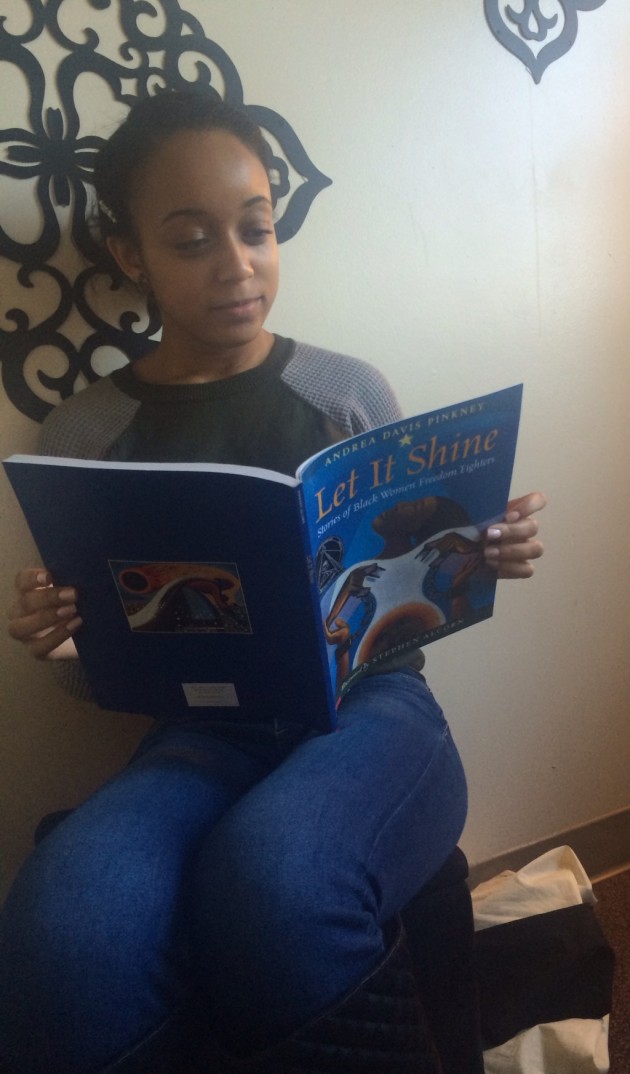Wednesday March 20 represented the 37th consecutive year Howard University has hosted the Special Olympics of D.C. Winter Games in unified basketball and individual motor skills. Howard University students and faculty along with Special Olympics of D.C. staff and participants gathered in Burr gymnasium, to carry yet another torch commemorating the opening of another Special Olympic game filling the room with a spirit of commitment, friendly competition, and camaraderie.
“When you watch [these athletes] play the game, they’re playing,” said Deborah K. Johnson, Howard University Associate Chair for Physical Education. “They give it their all, they give it their heart-whether they win or lose.”
Johnson who began working with the program in 1974, has seen the program transform and grow into what it is today. Despite changes in leadership she has not seen a decline in involvement from Howard students or in Special Olympics participants. Service learning and volunteerism are ingrained in her curriculum, and participation in these games, she believes will help instill those ideals in student and community volunteers alike.
“I did not know what to expect,” said 22-year old, Howard University student Breaunnah Bloomer. “I was a bit nervous, but when I arrived on Saturday and simply had the opportunity to cheer on these disabled athletes delighted simply by throwing a ball in a net–it made me feel happy to be there.”
Part one of the tournaments held at Howard represented a valuable program created by Special Olympics–Unified Sports. This program pairs Special Olympics athletes with athletes who do not have intellectual disabilities to train and compete together. Unified Basketball consists of two divisions. The East division is for moderate to low-moderate skilled athletes and partners. The West division consists of six highly competitive teams. Players in the West division are higher-ability athletes and partners–making it difficult to tell the difference between the two. The Unified Basketball Tournament is a 9-week program. Practice commences the first three weeks, and then they play a six-week league schedule, with the culminating championship being held at Howard.
“The most important aspect of Unified Sports is the achievement of social inclusion, meaning you connect our Special Olympics athletes without a disability and that’s very important because a lot of our athletes still don’t have a sense of belonging in the community,” said Mike Bovino, Special Olympics of D.C. Vice President of Development. “Now they have friends. They play alongside our Unified partners. They build relationships. They stay in touch. Talk on the phone. Go to games together.”
Part two of the three-day tournament was the individual skills and motor activities training program. This program consists of older lower ability athletes. Their program consists of shooting skills, dribbling skills and passing skills. The motor activities program is for very low ability athletes with significant challenges–many are in wheelchairs and some even nonverbal.
“They are given very basic activities that are very low ability in terms of cognitive functioning,” said Bovino. “They work at the skills for a number of weeks and this is their challenge day where they can show everybody what they can do.”
Special Olympics of D.C. is a non-profit organization aimed at providing quality sports and fitness opportunities for citizens with intellectual disabilities. All of the programs are free of charge and open to children and adults enabling them to challenge themselves, lead healthier lives, experience teamwork, success, and receive positive reinforcement for their efforts.
Special Olympics of D.C. transcends boundaries of gender, race, and financial status and works to serve all citizens specifically with intellectual disabilities.
“Sometimes, that’s a misnomer–some people will say, “oh you serve people with all disabilities,” but we don’t,” said Bovino. “We serve people with the largest disability population in the world. It’s about 190 million people in the world who have an intellectual disability and that includes many forms of autism.”
Special Olympics Internationalresearch suggests that improvements in self-image can be attributed to the opportunities for social interaction and achievement on and off the playing field for Special Olympic Athletes. In the U.S., approximately 90 percent of family members report improvement in social skills and friendships amongst athletes. Furthermore, Special Olympics also allow parents and family members of individuals with disabilities to learn new ways to work with their children and/or family member. 65 percent of parents in the U.S. reported that involvement with Special Olympics elevated their understanding of their children’s abilities and raised expectations of what can be achieved.
Special Olympics programs in D.C. and around the world–are taking strides to bridge the gap between special populations and the rest of society. These programs improve a person’s quality of life, provide health benefits, and allow them to develop life skills directly affecting their academic and employment achievement. Through the organizations efforts, webs of communication have been opened and the lives of athletes, partners, volunteers and family members
“There is a lot of negativity and this misconception that those with challenges are not a part of society, but they can be a part of society if they are given an opportunity,” Johnson said.



